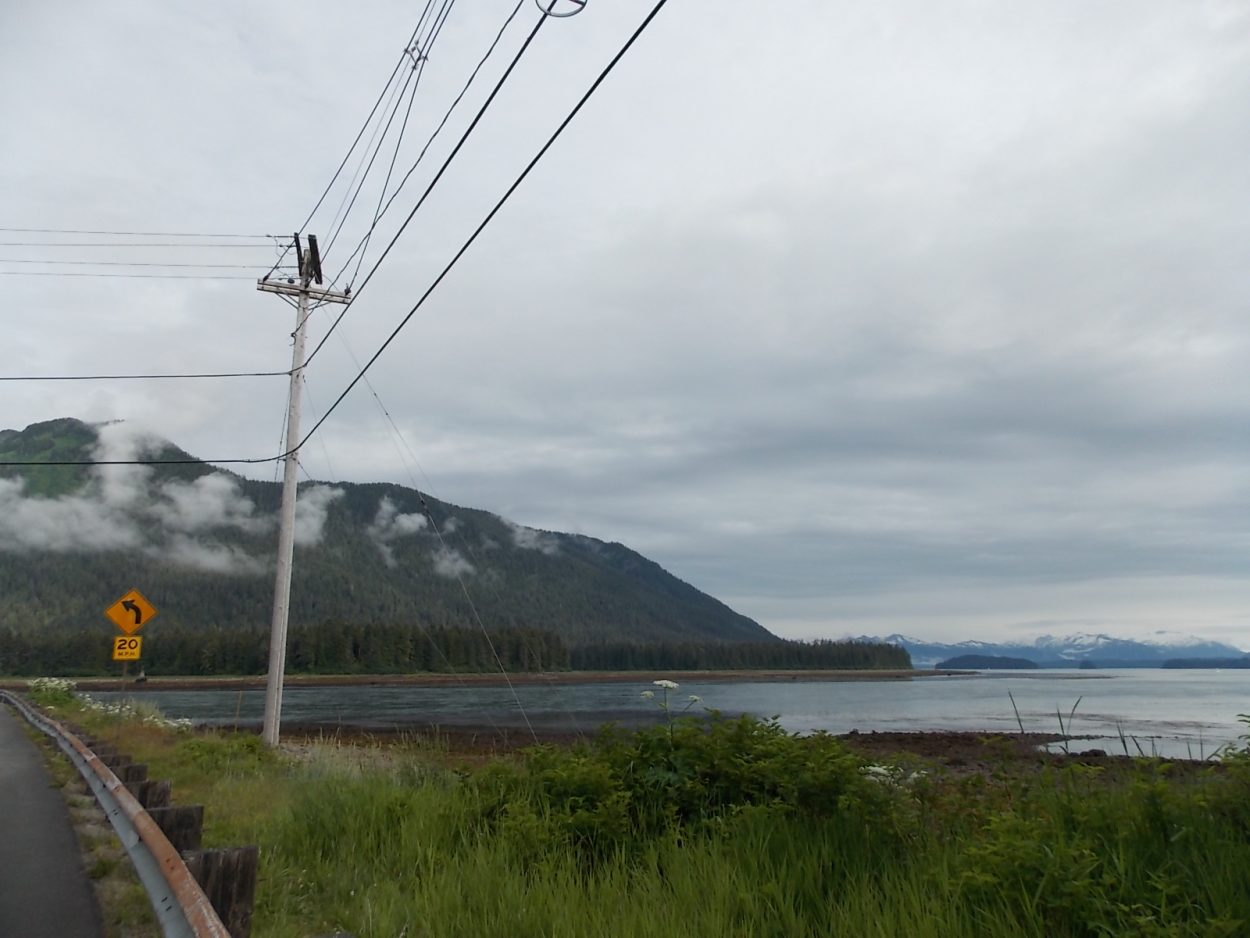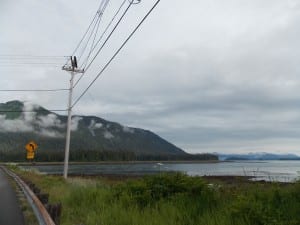Planners for an electrical powerline between Petersburg and Kake are pursuing options that avoid the nearby community of Kupreanof and Petersburg Creek. The Board of the Southeast Alaska Power Agency, or SEAPA, which is developing the connection, heard an update on the project this week in Petersburg.
For iFriendly audio, click here:
Consulting companies are working on planning and environmental review for potential routes for a powerline that could connect Kake to the electrical system in Petersburg, where powerlines continue on to Wrangell and Ketchikan. SEAPA owns those transmission lines along with two hydro electric projects in southern Southeast and is pursuing the Kake connection. One of the routes initially looked at for that project included running powerlines over, or under the mouth of Petersburg Creek, on Kupreanof Island just across the Wrangell Narrows from Petersburg.
Mark Schinman works for the consulting firm Commonwealth Associates out of Mt. Vernon Washington and gave a project update to the SEAPA board. “We got back comments recently from the Forest Service. They didn’t really like the Petersburg Creek option,” Schinman said. “Course the borough of Petersburg didn’t like it. We’ve talked to a lot of people in Kupreanof and they don’t like it. So we’ve gone out and looked at other alternatives.”
Schinman said there are now three options under consideration in the environmental review. The Petersburg Creek option is not one of them. The options are what’s called the center-south route, which would cross Wrangell Narrows and the Tonka road system on the Lindenberg Penninsula south of Petersburg. There’s also two northern routes which would use an established road corridor on northeast Kupreanof Island. One option would involve laying a submarine cable on the sea floor in Frederick Sound to make the crossing to Kupreanof. A new option would mean tunneling underneath the mouth of the Wrangell Narrows from near Outlook Park to a spot near Prowlewy Point on Kupreanof Island and running the powerline through a 10-inch conduit.
SEAPA CEO Trey Acteson explained the benefits of that new alternative. “It avoids Petersburg Creek which I know is a recreation area that people were really concerned about. It avoids Kupreanof which seemed to be a highly sensitive area, which basically entails coming across the throat of the inlet there and then going underground once it gets over to the shore.”
That option could also mean burying the powerline and existing powerlines along Sandy Beach road out to Sandy Beach Park and that new option has become the preferred alternative for SEAPA of the three still under consideration. The two northern route options are about 56 miles long, while the center south route is about 10 miles shorter. It’s also cheaper to construct. The latest cost estimates put the center south route at nearly 59 million dollars, the other two range from 65 million to 72 million dollars.
Commonwealth’s Schinman explained a planned road along the northern route will make a difference for maintaining the powerline. “Just looking at this one would think, lets go center-south. But you need to remember, if the state puts in a road along the northern route, over the life of the project taking maintenance into consideration, because you have a road to maintain it from the northern route would be the best option. So what they do with that road’s a key decision.”
The powerline is intended to reduce or end diesel power generation in Kake, which can cost five or six times the price of hydro-electric project.
The road project has 40 million dollars in state funding already appropriated for construction. However planning and review of that project is at least a year behind the powerline work. And a northern route road is just one option under a broader study of improved transportation to Kake, including ferry service to the community.
Meanwhile, there’s five million dollars in state money funding the planning and review for the powerline – but no funding secured yet for construction. Board members asked about continuing with the project and wondered about approaching the state for construction funding. SEAPA CEO Acteson thought they should get the project construction ready. “Until you have that ready, you have firm numbers, have the routing selection, have permitting done, the state’s not going to dedicate a bucket of money to make it happen. But once that’s done there’ll be some pressure on the state to move forward with it, I mean if they’ve spent five million on it to this point and they’re just gonna abandon it, ah, that seems a little goofy.”
The project faces additional hurdles – the largest may be identifying a source of electricity to send to Kake. SEAPA’s two hydro plants already do not cover the combined demand in Petersburg, Wrangell and Ketchikan at certain times of year. The agreement between the Alaska Energy Authority, Inside Passage Electrical Cooperative and SEAPA on the powerline recognizes the need to add new power sources to the grid and says without new sources the project would be risky and unwise.
Some new power sources are on the way at least on the southern end of the system. SEAPA has approached the state for funding to help raise the dam at one of the agency’s hydro sites at Swan Lake near Ketchikan. That community is also constructing another hydro plant at Whitman Lake while other plans are in the works for another site at Mahoney Lake and in Metlakatla.
SEAPA board member Joe Nelson of Petersburg suggested suspending work on the Kake line until the state appropriates money for the Swan Lake project, however the board did not follow up on that suggestion. Board member Sam Bergeron of Ketchikan also asked about the cost of maintaining the proposed line, and whether that could be paid by customers in Kake. “It seems like it’s rapidly coming out of reach for the folks in Kake,” Bergeron said. “Why do we have to go through all of this to figure that out? I mean it just seems like the economics of the project aren’t there.”
Earlier estimates put the annual maintenance costs at hundreds of thousands of dollars. An updated review of those costs is expected as part of the planning process. A draft environmental document on the powerline is expected out in October.











